- Home
- Bill Bryson
Icons of England
Icons of England Read online
ICONS OF
ENGLAND
Edited by
Bill Bryson
BLACK SWAN
This eBook is copyright material and must not be copied, reproduced, transferred, distributed, leased, licensed or publicly performed or used in any way except as specifically permitted in writing by the publishers, as allowed under the terms and conditions under which it was purchased or as strictly permitted by applicable copyright law. Any unauthorised distribution or use of this text may be a direct infringement of the author’s and publisher’s rights and those responsible may be liable in law accordingly.
Version 1.0
Epub ISBN 9781409095668
www.randomhouse.co.uk
TRANSWORLD PUBLISHERS
61–63 Uxbridge Road, London, W5 5SA
A Random House Group Company
www.rbooks.co.uk
ICONS OF ENGLAND
A BLACK SWAN BOOK: 9780552776356
First published in Great Britain
in 2008 by Think Books
Black Swan edition published 2010
Copyright © Pan Macmillan Ltd, CPRE, Think Publishing 2008. This 2010 edition copyright © CPRE and Transworld Publishers
BIG YELLOW TAXI Words and Music by Joni Mitchell © 1970 (Renewed) CRAZY CROW MUSIC All Rights Administered by SONY/ATV MUSIC PUBLISHING, 8 Music Square West, Nashville, TN 37203. Used by Permission of ALFRED MUSIC PUBLISHING CO., INC. All Rights Reserved.
‘In Praise of Limestone’, copyright © 1951 by W. H. Auden, from Collected Shorter Poems by W.H. Auden. Copyright © the Estate of W.H. Auden. Reproduced by permission of Faber and Faber Ltd and Random House, Inc.
The authors of these pieces have asserted their rights under the Copyright, Designs and Patents Act 1988 to be identified as the authors of these works.
Bill Bryson has asserted his right under the Copyright, Designs and Patents Act 1988 to be identified as the editor of this work.
This book is a work of non-fiction.
A CIP catalogue record for this book is available from the British Library.
This book is sold subject to the condition that it shall not, by way of trade or otherwise, be lent, resold, hired out, or otherwise circulated without the publisher’s prior consent in any form of binding or cover other than that in which it is published and without a similar condition, including this condition, being imposed on the subsequent purchaser.
Addresses for Random House Group Ltd companies outside the UK can be found at: www.randomhouse.co.uk The Random House Group Ltd Reg. No. 954009
The Random House Group Limited supports The Forest Stewardship Council (FSC), the leading international forest certification organisation. All our titles that are printed on Greenpeace approved FSC certified paper carry the FSC logo. Our paper procurement policy can be found at www.rbooks.co.uk/environment.
Printed in the UK by CPI Cox & Wyman, Reading, RG1 8EX.
2 4 6 8 10 9 7 5 3 1
CONTENTS
Cover
Title
Copyright
Dedication
Foreword – HRH The Prince of Wales
Introduction – Bill Bryson
In Search of England’s Gnomes – Kate Adie
A Place in the Country – George Alagiah
From Pillar to Post – Peter Ashley
From Little Acorns – Clive Aslet
Rural Rides – Paul Atterbury
Where the River Meets the Sea – Joan Bakewell
Time to Stand and Stare – Muhammad Abdul Bari
Sighting the Stubble-Stag – Simon Barnes
‘Sumer Is Icumen In’ – Laura Barton
Through the Lychgate – Sister Wendy Beckett
Ghost Orchids – Antony Beevor
The Call of the Grouse – David Bellamy
Let’s Talk About the Weather – Floella Benjamin
Senses and Sensibility – Richard Benson
Sticking the Wicket – Scyld Berry
A Personal View – Harold ‘Dickie’ Bird
An Ordinary Beauty – Terence Blacker
Love’s Labours Won – Raymond Blanc
Those Special Places – Ronald Blythe
My Little Piece of History – Rosie Boycott
The Final Frontier – Derry Brabbs
Rutland How I Love Thee – Julia Bradbury
In High Places – Melvyn Bragg
Rural Development – Jo Brand
The Urban Village – Vincent Cable
The View from the Urals – Adrian Chiles
What a Waste – Eric Clapton
Back on Dry Land – Sue Clifford
Rhyme and Reason – Wendy Cope
All A Broad – Nicholas Crane
Rebuilding the Past – Dan Cruickshank
From the Trenches – General Sir Richard Dannatt
Beside the Seaside – Jonathan Dimbleby
A Passion for Meat – Wilfred Emmanuel-Jones
Reading the Signs – Sebastian Faulks
Another Time, Another Place – Bryan Ferry
Riding High – Dick Francis
A Conversation with Self – Trisha Goddard
Defenders of Our Back Yards – Zac Goldsmith
An Artist’s Impression – Andy Goldsworthy
Cherry Time – Henrietta Green
Pastures New – Graham Harvey
Bonfire Night – Tom Heap
Following the Furrow – Paul Heiney
Crossing Over – Leo Hickman
The Tree Museum – Simon Hoggart
How the Other Half Lives – Charlotte Hollins
My Island – Elizabeth Jane Howard
Against the Elements – Margaret Howell
A Real Cliffhanger – Tristram Hunt
Cathedrals of Sewage – Maxwell Hutchinson
The Way Ahead – Kurt Jackson
To the Manor Born – Simon Jenkins
View over London – Terry Jones
Older than England – Paul Kingsnorth
Down Memory Lane – Miles Kington
Earth Pilgrim – Satish Kumar
Writing Stiles – David Lodge
Bluebell Picnics – Gabby Logan
Hidden Depths – Richard Mabey
A Guardian of Beauty – Fiona MacCarthy
The Road Taken – Robert Macfarlane
Drawing the Line – Andrew Marr
Scouring the Countryside – Peter Marren
The Secret Kingdom of Marrowland – Simon Sebag Montefiore
Fair Play – Brian Moore
An Enduring Affair – Richard Muir
My Corner Shop – Daljit Nagra
Ancient Jewels – John Julius Norwich
The Point of No Return – Sean O’Brien
Living on the Edge – Michael Palin
Taking Root – Jonathon Porritt
Whatever the Weather – Gavin Pretor-Pinney
Holding Back the Sea – Libby Purves
Dig for Victory – Tony Robinson
Smiling at the Neighbours – Alexei Sayle
Paradise Found – John Sergeant
The Bard’s Own River – Antony Sher
In Defence of Totnes – Lucy Siegle
Forever Tranquil – Mary Smith
Brave New World – Jon Snow
A Slow Boat to Bristol – Kevin Spacey
The Wild Dip – Rick Stein
The Light of Day – Roy Strong
Forbidden Fruits – Alice Temperley
Poetry in Motion – Nigel Thompson
This Land of Dreaming Spires – Simon Thurley
Heaven in a Wild Flower – Alan Titchmarsh
Alone on the Moors – Mark Tully
Taking Flight – Charlie Waite
The Dawn Chorus – Chris
Watson
Beautiful Evenings – Francis Wheen
Alfred’s Cakes – Michael Wood
My Adventure Playground – Benjamin Zephaniah
Support our Campaign – Shaun Spiers, Chief Executive, CPRE
Contributors
Illustration credits
THE CAMPAIGN TO PROTECT RURAL ENGLAND warmly thanks all those who have contributed to this book. We dedicate it to the many thousands of volunteers who have worked so hard and given so freely of their time since we were founded in 1926.
Registered charity no: 1089685
www.cpre.org.uk
THIS COLLECTION OF PIECES celebrating rural England does not only focus on the rolling hillsides and spectacular landscapes that set England apart from the rest of the world. Many of the contributors bring their own special touch, with personal anecdotes and refreshingly original choices of icons representing what the English countryside really means to them.
First published as a lavishly illustrated hardback, this new paperback edition has double the number of new contributions from many well-known fi gures. The sale of every copy will support the campaigning work of CPRE, the organization which is dedicated to a beautiful and living countryside.
FOREWORD
His Royal Highness
The Prince of Wales
CLARENCE HOUSE
There is perhaps a rich irony in the fact that it takes an American, albeit one who has lived in these islands for many years, to recognize, celebrate and fight to preserve so much of what is precious about our country. There can be no-one who more deserves the title of “honorary Englishman” than Bill Bryson. Through his books, films and his campaigning as President of the Campaign to Protect Rural England he has done so much to help us appreciate the wonders and charms which surround us and to which, too often, we seem utterly blind. We all owe him the greatest possible debt, and so I could not be more pleased to write a foreword to this remarkable book, Icons of England.
And what greater icon could we have than our countryside, which I have always believed helps to define our identity as a nation? England is blessed with some of the most beautiful scenery in the world. The patchwork quilt of fields, moors, forests, villages, and market towns which spreads across this land is the product of a golden combination of Nature’s gift to us and the toil and care of generations of farmers and their families who have managed the land. To me, it embodies England’s very soul and is as precious as any Cathedral. The dry stone walls, the hedges, the thatched cottages, the village Churches, pubs, post offices and shops are at the heart of what it means to be English, as are the people whose skills and craftsmanship and commitment keep them alive.
For more than eighty years, the Campaign to Protect Rural England has been leading the fight to preserve the remaining delicate fabric of our countryside. The foresight of the founding fathers was extraordinary – in 1926 Clough Williams-Ellis, whom I remember well and admire greatly, published England and the Octopus, an anti- sprawl polemic, and in the same year Sir Patrick Abercrombie wrote his paper, The Preservation of Rural England. The fight has continued since then and great successes have been won. Indeed, the recent creation of the South Downs National Park, sixty years after it was first proposed, shows the importance of perseverance and is a huge cause for optimism. When we do all come together to work towards a goal, so much can be achieved. It gives me hope that we will not allow our traditions and heritage to be swept away, and that we will look once more to the land for nourishment, healing, wisdom and inspiration.
When asked what, for them, encapsulates the English countryside, the contributors to this book came up with a wide variety of personal icons, from a favourite landscape to a treasured monument, from a particular species of wildlife to a familiar rustic emblem or rural tradition. Together they have created an eclectic and richly varied celebration of England’s countryside. I pray that this book will inspire us all to work tirelessly to preserve everything that is best in our magnificent countryside and to ensure that it remains at the very heart of our great island story.
INTRODUCTION
Bill Bryson
President, CPRE
YEARS AGO, WHEN I was brand new to Britain and everything was still a mystery to me, I went with an English friend to Brighton for the day, and there I saw my first seaside pier. The idea of constructing a runway to nowhere was one that would never have occurred to me. I asked her what it was for.
‘Well, they let you walk out and see the sea,’ she explained as if I were a little simple.
‘But we can see the sea from here,’ I pointed out.
‘No, you don’t understand. You walk out to the end and you are over the sea. It’s lovely.’
‘Can you see coral reefs and shipwrecks and things?’ I asked hopefully.
‘No, it’s just murky water.’
‘Can you see France?’
‘Of course not. You just see the sea.’ Her tone betrayed perhaps just a hint of exasperation. ‘You take the air. It’s very bracing.’
‘And then what?’
‘Then you walk back and have some whelks and stroll along the promenade and maybe ride a donkey on the beach – no, I don’t know why; it’s just something else we do – and then you have an ice cream and get on the train and go home.’
‘And this is a fabulous day out?’
‘Oh yes, it’s lovely. Especially if it doesn’t rain.’
I have since come to realize that she was right about everything but the whelks. (If you are reading this in another country and aren’t familiar with that marine delicacy, you may get the same experience by finding an old golf ball, removing the cover and eating what remains. The only difference is that the golf ball has a little more flavour.) Indeed, after some thirty years of devoted observation, I have come to appreciate that the things that make England what it is – which is to say, like nowhere else on Earth – and however peculiar they may seem at first blush, are actually quite endearing and often deeply admirable. This is a book about those things.
Four qualities in particular, I think, set English icons apart and make them more memorable, more individual, vastly more noteworthy than icons elsewhere. Foremost among these is the ability – so gloriously evinced in the seaside pier – to be magnificent while having no evident purpose at all.
Consider one of my own favourite national glories, the wondrously artificial, profoundly inexplicable Silbury Hill in Wiltshire – the largest man-made mound in Europe. Built at about the same time as Stonehenge, it covers five acres and rises 130 feet above the surrounding landscape. It is positively immense, and involved an almost unimaginable commitment of labour. Yet Silbury Hill has no known purpose. It is not a burial chamber and holds no treasures. It consists of nothing but soil and rock carefully formed into a large pudding-shaped hill. All that can be said for certain is that some people at some time in the very distant past decided, for purposes we cannot guess, to make a large hill where previously there had been none.
There really is a kind of national instinct for putting up interesting things whether there is a need for them or not. You see it in chalk horses carved in hillsides and Scottish brochs and drystone walls climbing up and over preposterously steep and craggy slopes. (Who cares where the sheep go when they get up there?) I have always been convinced that the starting point for Stonehenge was some guy standing on Salisbury Plain and saying: ‘You know, what this place needs is some really big rocks.’
Which brings us to the second distinctive quality of English icons – their ubiquity. Let us rush to London, to modern times, so I can show you what I mean. We are at Hyde Park Corner roundabout, surrounded by a ceaseless flow of vehicles, gazing up at the enormous arched monument that stands on the parklike green island in its centre. Atop the monument is a large statue of a winged goddess on a chariot. The island is a surprisingly tranquil place, and in fact rather a lonely one, for few visitors find their way through the pedestrian tunnels that lead to it. Fewer still are aware th
at the arch contains a charming museum and a lift that takes you to a lookout terrace where you get one of the most splendid views in London. It is only way up here that you realize just what a large structure this is – and how startlingly outsized the statue on the roof is. It is the largest bronze sculpture in Europe. Only when you are up there does the scale of all this come into sudden focus. This is a monumental edifice indeed.
Now here is the really interesting thing about it. Ask anyone in London – any cab driver, any policeman, any citizen you care to collar – what the name of this arch is and hardly any of them can tell you. Although it is one of the most visible and driven-past monuments in London, on as prime a site as the city offers, it is utterly and enchantingly lost to consideration because it is just of one of hundreds and hundreds of historic, appreciable, glorious, iconic structures that exist in London. Almost anywhere else in the world this would be a celebrated monument. Here it is backdrop.
Part of the reason its name is not better known is that it has had several in the 180 years since it was built by the great Decimus Burton. At various times it has been known as Constitution Arch, Wellington Arch, Green Park Arch and now Wellington Arch again. You won’t be surprised to hear that it is also quite useless and always has been. It was designed originally as an outer entryway to Buckingham Palace, but was such an impediment to traffic, and so completely out of scale, that it was moved to the traffic island in 1882 just to get it out of the way.
It is your good fortune in this country to have so many iconic treasures, but it is a danger too. Having so many means that they are easily forgotten and even lost – which is the third and most tragic of the qualities that set English icons apart. In the thirty years I have known England, you have lost, or all but lost, an appreciable number of iconic features – milk bottles, corner shops, village post offices, red phone boxes, seaside holidays and even some seaside piers, including the one at Brighton that so bemused and transfixed me thirty years ago.

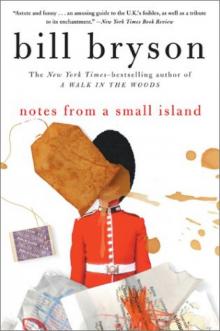 Notes from a Small Island
Notes from a Small Island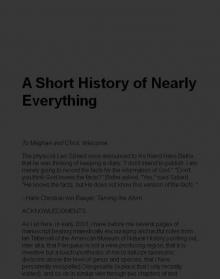 A Short History of Nearly Everything
A Short History of Nearly Everything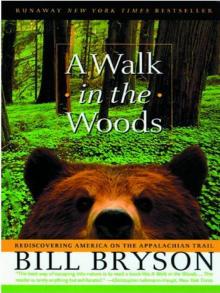 A Walk in the Woods
A Walk in the Woods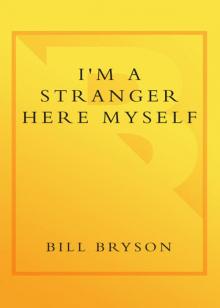 I'm a Stranger Here Myself
I'm a Stranger Here Myself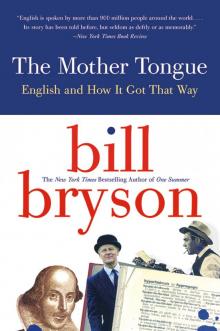 The Mother Tongue
The Mother Tongue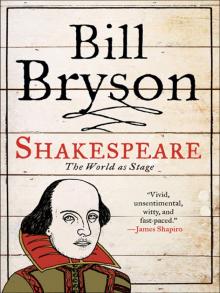 Shakespeare
Shakespeare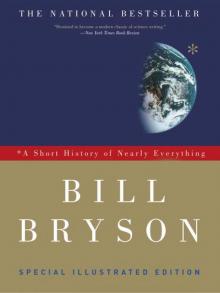 A Short History of Nearly Everything: Special Illustrated Edition
A Short History of Nearly Everything: Special Illustrated Edition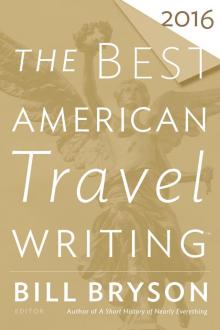 The Best American Travel Writing 2016
The Best American Travel Writing 2016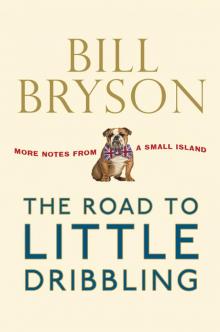 The Road to Little Dribbling
The Road to Little Dribbling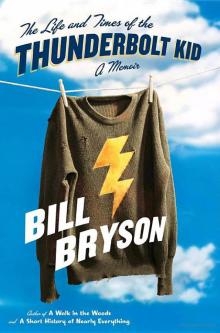 The Life And Times Of The Thunderbolt Kid: A Memoir (v5.0)
The Life And Times Of The Thunderbolt Kid: A Memoir (v5.0)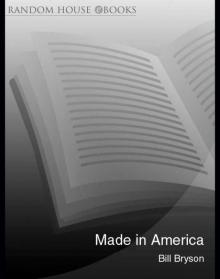 Made In America
Made In America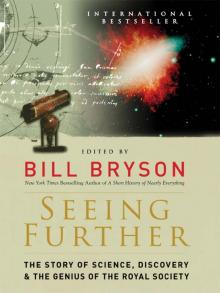 Seeing Further
Seeing Further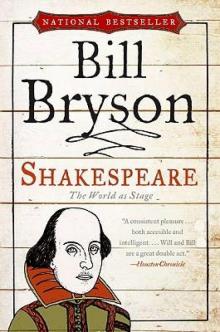 Shakespeare: The World as Stage
Shakespeare: The World as Stage The Life and Times of the Thunderbolt Kid
The Life and Times of the Thunderbolt Kid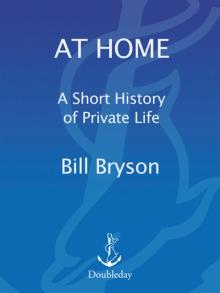 At Home
At Home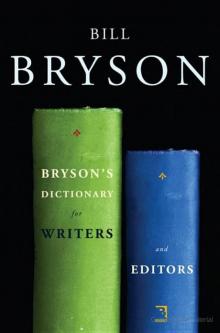 Bryson's Dictionary For Writers And Editors (v5.0)
Bryson's Dictionary For Writers And Editors (v5.0) Neither Here Nor There
Neither Here Nor There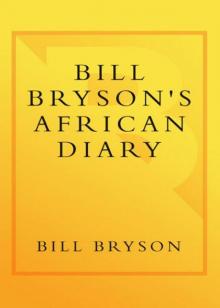 Bill Bryson's African Diary
Bill Bryson's African Diary